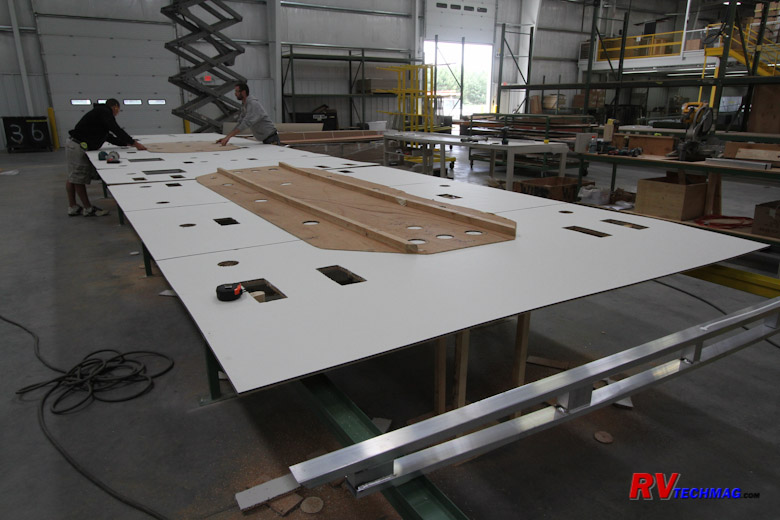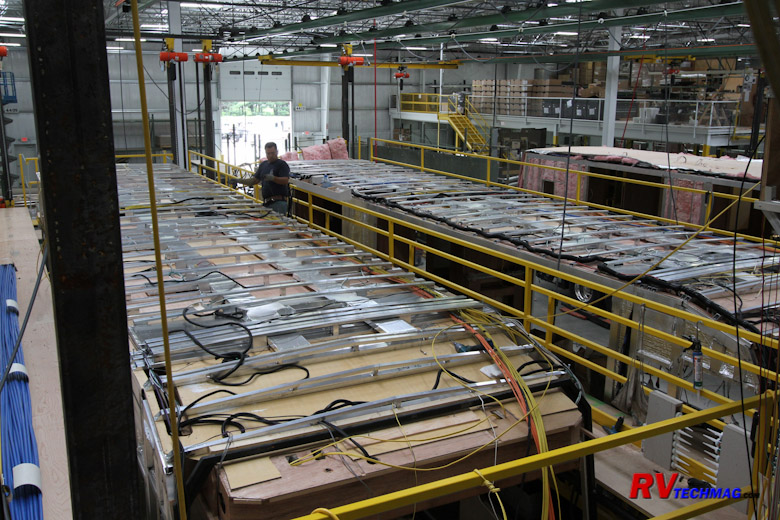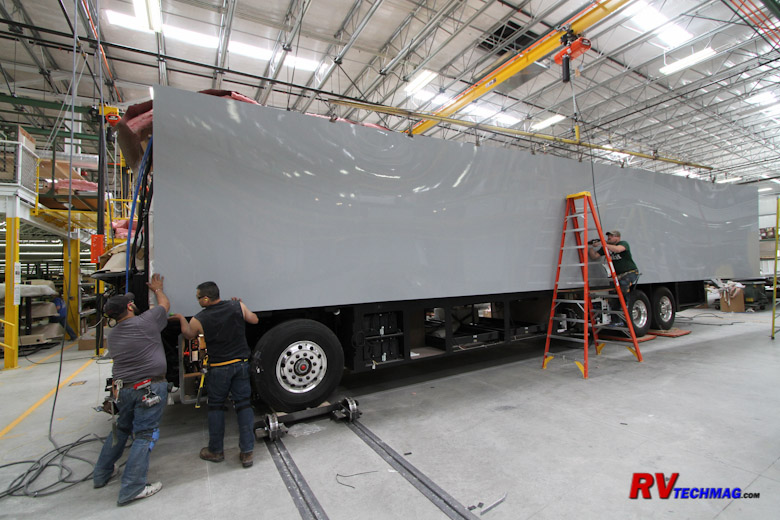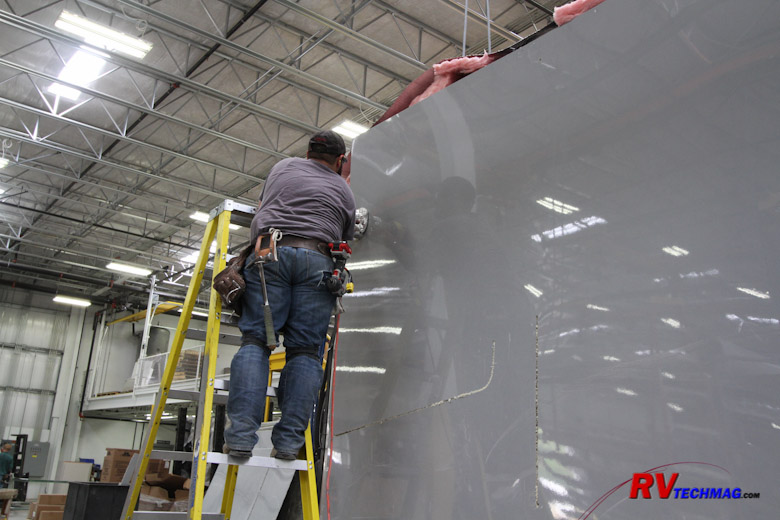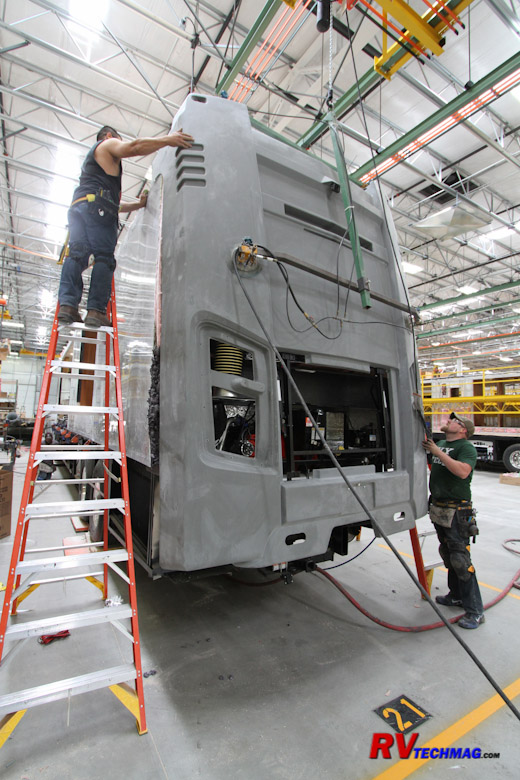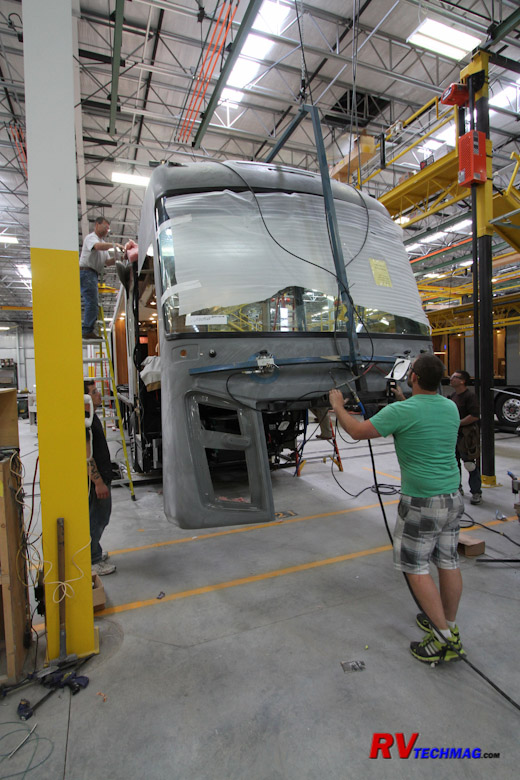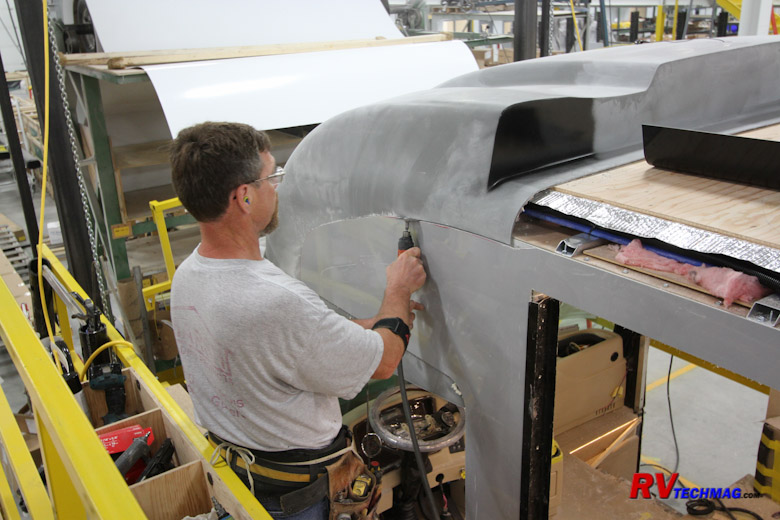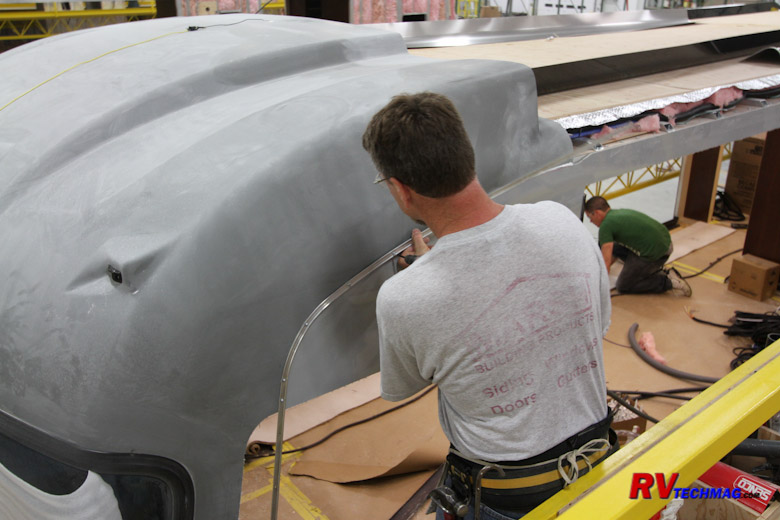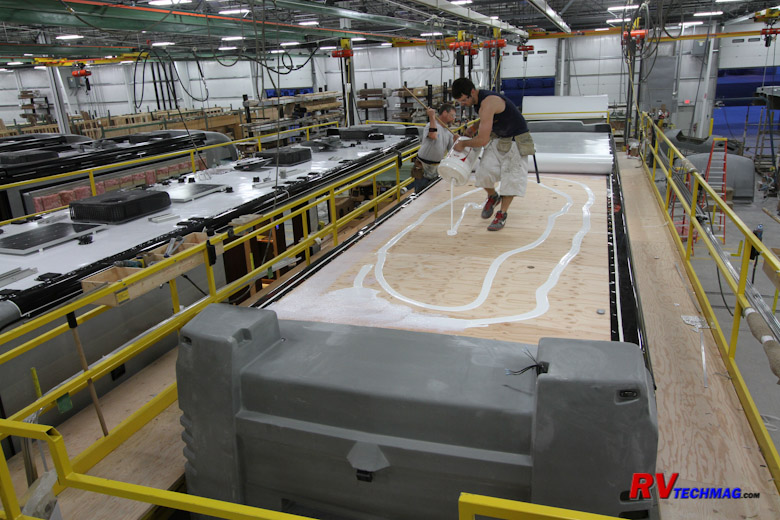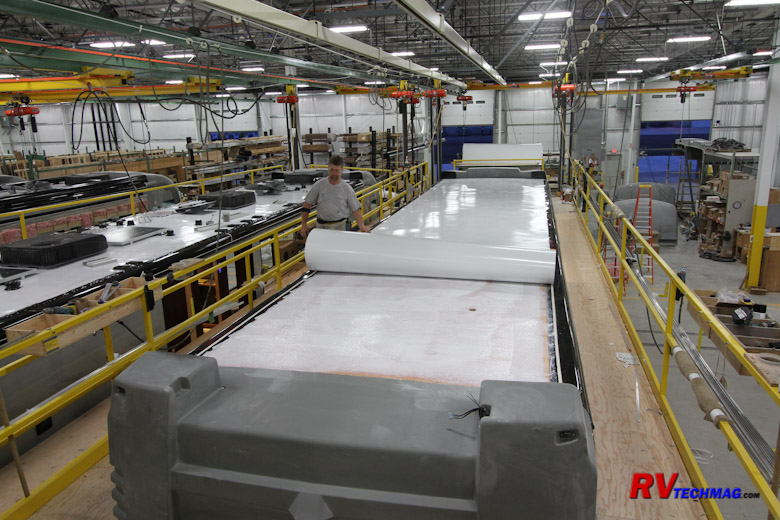Building an Entegra Coach
Following the Construction of a 2016 Cornerstone from Start to Finish
Article Date: January, 2016
Article and Photography by Mark Quasius

Buttoning Up the Exterior
At this stage we are now ready to apply the fiberglass skin to
the sides of the coach, install the roof and mount
the front and rear caps.
At this stage the ceiling panels are prepared in an adjacent area. These panels are then set in place on top of
the coach and the aluminum rafters are fastened to the sidewalls. Once the
panels are all in place all of the ceiling electrical wiring
is installed as well as the duct work for the air conditioning system.
The roof is then stuffed full of fiberglass insulation, which is then covered by more Flex Foil. Next, 1/2" plywood
is glued and screwed to the aluminum roof trusses. Entegra makes a very strong roof with trusses at a maximum of 16" centers and some
cases where they are doubled or even tripled for additional strength in key areas.
Massive sheets of fiberglass are then suspended by overhead hoists and brought over to the side of the coach.
Each panel is adhered to the sidewall framing with a special fast-set adhesive. Slideout openings and window openings are then cut out
with a router. The slideout pieces are then tagged and sent to the slideout department to be used in that same slideout location.
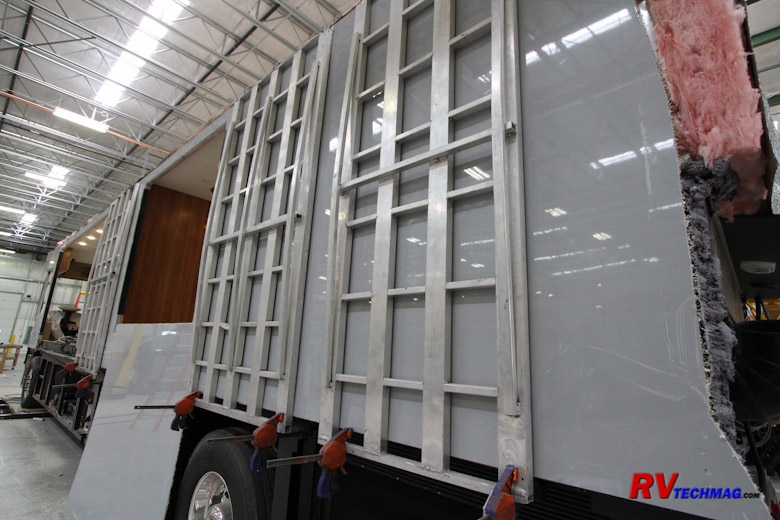
Large aluminum frames are used to clamp the fiberglass while the adhesive cures.
The front and rear caps are grasped by large jigs with vacuum pads and hoisted into place.
The front and rear caps are oversized so that the fiberglass extends and overlaps the sidewalls. A cutting
tool is used to make an exact cut for a perfect fit every time. Adhesive is applied beneath the joint and trim molding installed
over the top of the seam.
Adhesive is applied over the plywood roof and a continuous sheet of fiberglass is rolled out over the roof.
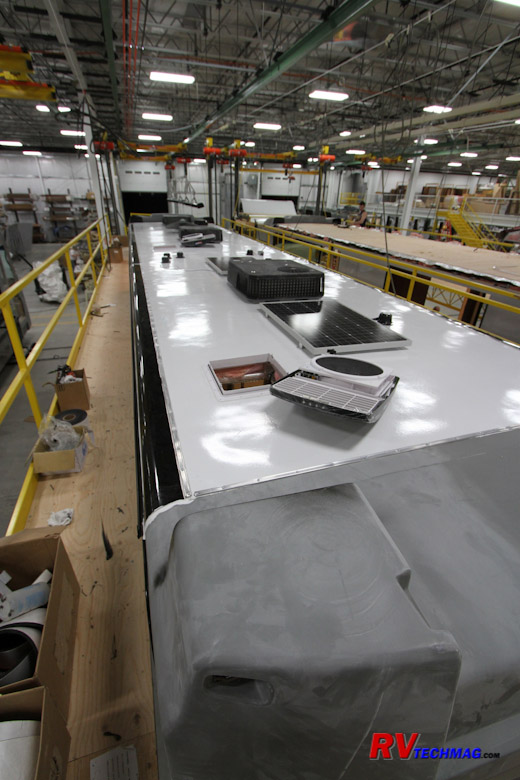
Edge molding is applied at the edges of the roof fiberglass and sealant applied. Once the roof adhesive has
set, the various roof mounted accessories, such as air conditioners, solar panels and fans are installed.
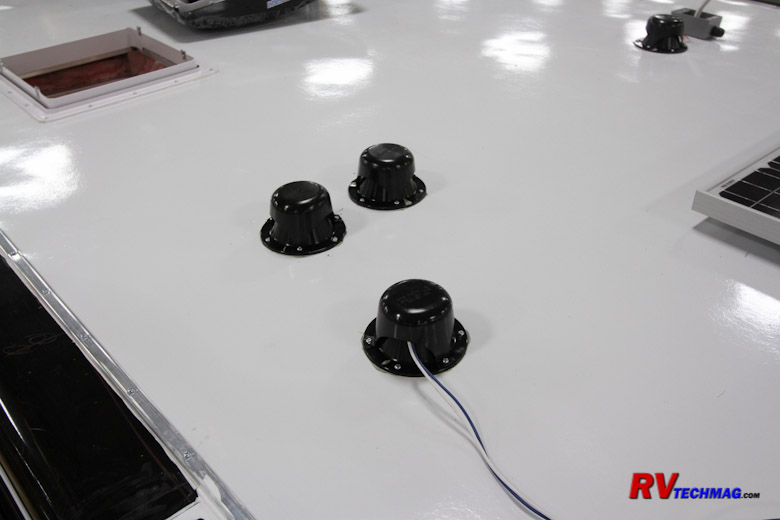
Plumbing vent pipes are fitted with protective caps. These caps are also used to feed wiring to the satellite
dish, broadcast TV antenna and solar panels. Wiring for these and other optional accessories is prewired and stored beneath the caps. Each
cap is sealed up with foam, which can easily be removed to retrieve this wiring in the future if desired.
Return to Home Page
If you enjoyed this article be sure to recommend RVtechMag.com to your friends, like us on Facebook or Twitter
or subscribe to our RSS feed.



|



